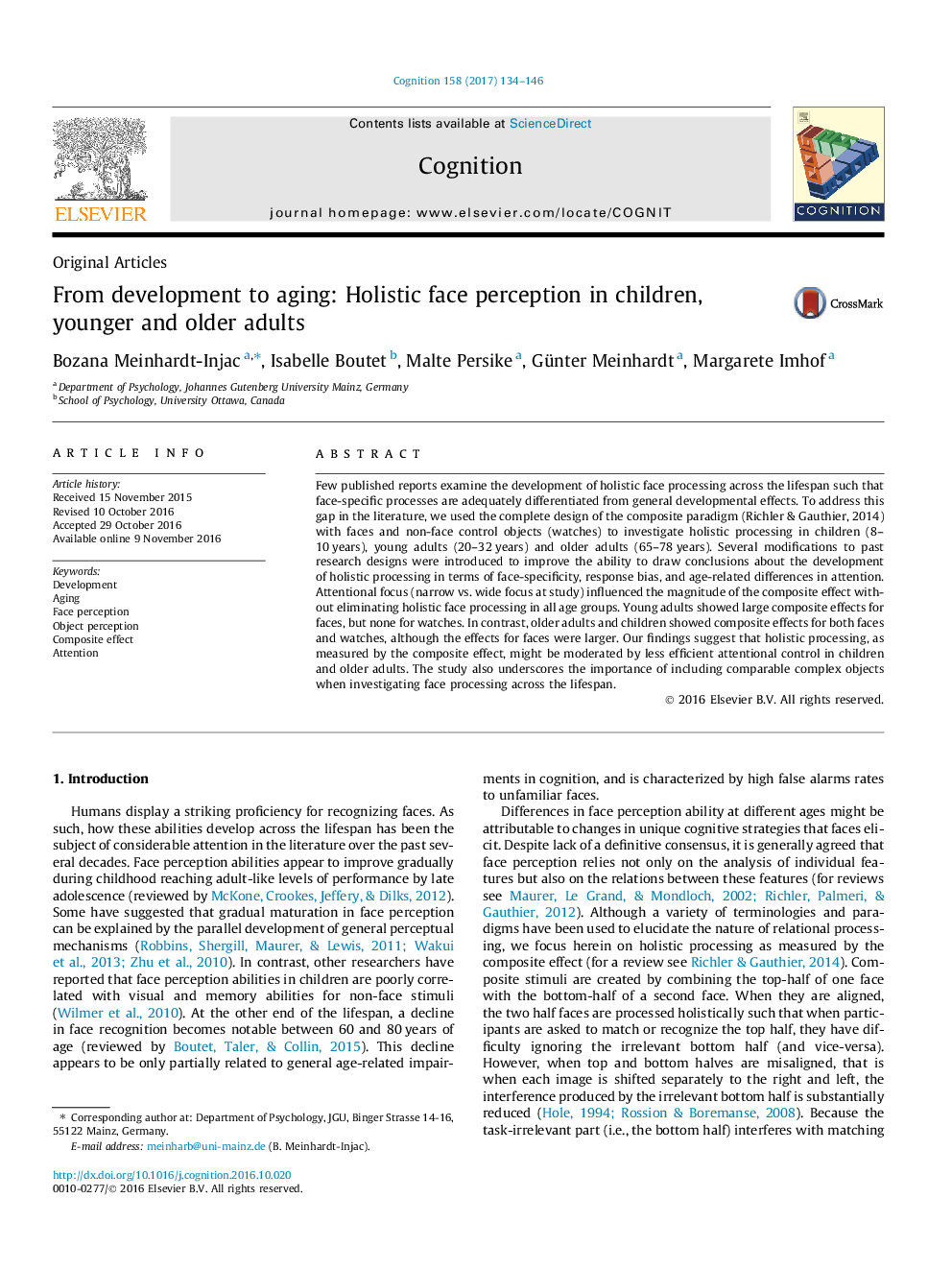| Article ID | Journal | Published Year | Pages | File Type |
|---|---|---|---|---|
| 5041687 | Cognition | 2017 | 13 Pages |
Few published reports examine the development of holistic face processing across the lifespan such that face-specific processes are adequately differentiated from general developmental effects. To address this gap in the literature, we used the complete design of the composite paradigm (Richler & Gauthier, 2014) with faces and non-face control objects (watches) to investigate holistic processing in children (8-10Â years), young adults (20-32Â years) and older adults (65-78Â years). Several modifications to past research designs were introduced to improve the ability to draw conclusions about the development of holistic processing in terms of face-specificity, response bias, and age-related differences in attention. Attentional focus (narrow vs. wide focus at study) influenced the magnitude of the composite effect without eliminating holistic face processing in all age groups. Young adults showed large composite effects for faces, but none for watches. In contrast, older adults and children showed composite effects for both faces and watches, although the effects for faces were larger. Our findings suggest that holistic processing, as measured by the composite effect, might be moderated by less efficient attentional control in children and older adults. The study also underscores the importance of including comparable complex objects when investigating face processing across the lifespan.
